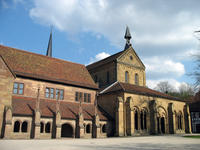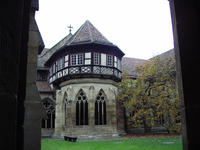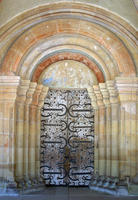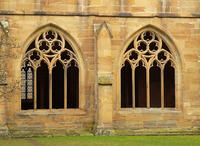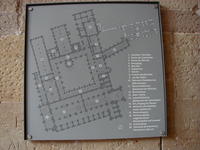You are in: Europe -> Germany -> Maulbronn Monastery ... , and traditional search or Image Gallery will yield results of this site only
Maulbronn Monastery Complex
| Site number: | 546 |
|
| Type of site: | Cultural | |
| Date: | 1147 | |
| Date of Inscription: | 1994 | |
| Location: | Europe, Germany, State of Baden-Württemberg, District of Enz | |
| Video: |
|
Up to 75 images are shown here. Click on each for more details or on Image Gallery for more images.
| Description: | The Cistercian Maulbronn Monastery, founded in 1147, is deemed the most fully preserved medieval monastic complex north of the Alps. The main buildings, enclosed by fortified walls, were erected between the 12th and 16th centuries. In a mainly Transitional Gothic style the monastery's church sincerely impacted the spread of Gothic architecture over most of northern and central Europe. Of exceptional significance is Maulbronn’s water-management system, with its elaborate network of drains, irrigation canals and reservoirs. --WHMNet paraphrase from the description at WHC Site, where additional information is available. | |
| Maulbronn Abbey (German: Kloster Maulbronn) is the best preserved medieval Cistercian monastery complex in Europe. It is situated on the outskirts of Maulbronn, Baden-Württemberg, Germany and is separated from the town by fortifications. The monastery was founded in 1147 under the auspices of the first Cistercian pope, Eugenius III. The main church, built in a style transitional from Romanesque to Gothic, was consecrated in 1178 by Arnold, Bishop of Speyer. A number of other buildings — infirmary, refectory, cellar, auditorium, porch, south cloister, hall, another refectory, forge, inn, cooperage, mill, and chapel — followed in the course of the 13th century. The west, east and north cloisters date back to the 14th century, as do most fortifications and the fountain house. After the Reformation broke out, the Duke of Württemberg seized the monastery in 1504 and built his hunting lodge and stables there. Half a century later, the former abbey was given over to a Protestant seminary, currently known as the Evangelical Seminaries of Maulbronn and Blaubeuren, which has occupied it ever since. The Protestant clerics adapted the monastic buildings for their own needs, e.g., they rebuilt the refectory. The monastery, which features prominently in Hermann Hesse's novel Beneath the Wheel, was inscribed on the World Heritage List in 1993. The justification for the inscription was as follows: "The Maulbronn complex is the most complete survival of a Cistercian monastic establishment in Europe, in particular because of the survival of its extensive water-management system of reservoirs and channels". --Wikipedia. Text is available under the Creative Commons Attribution-ShareAlike License. | ||
| Source: | http://whc.unesco.org/en/list/546 | |
| Source2: | http://whc.unesco.org/en/list/546/video | |
| Reference: | 1. UNESCO World Heritage Center, Site Page. | |


 NHK World Heritage 100 series
NHK World Heritage 100 series





